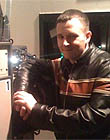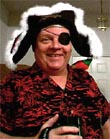|
|
This topic comprises 2 pages: 1 2
|
|
Author
|
Topic: Why is a film shot flat or scope?
|
|
|
Aaron Garman
Phenomenal Film Handler

Posts: 1470
From: Toledo, OH USA
Registered: Mar 2003
|
 posted 10-21-2004 12:50 PM
posted 10-21-2004 12:50 PM




I think for many directors, it is an artistic choice. For instance, Spielberg was once asked why Jurrasic Park was not in the scope format, and he stated that to convey the height of the dinosaurs, the Flat format was more effective. I like the idea of the artist having this freedom, but what bugs me is when they shoot Super35 and make scope out of it. In many cases, like Master and Commander, it looks worse than it should. Now Lord of the Rings was an exception to this rule, as I think it looked magnificent. In addition, LOTR would have been extremely difficult to do in true anamorphic because of all the shots that used "forced perspective."
AJG
| IP: Logged
|
|
|
|
|
|
Christian Appelt
Jedi Master Film Handler
Posts: 505
From: Frankfurt, Germany
Registered: Dec 2001
|
 posted 10-21-2004 04:55 PM
posted 10-21-2004 04:55 PM




quote: Aaron Garman
For instance, Spielberg was once asked why Jurrasic Park was not in the scope format, and he stated that to convey the height of the dinosaurs, the Flat format was more effective.
Which makes sense only in theatres with top masking. Dinosaurs would not look smaller on a full scope screen just because the image extends more horizontally.
Many effects people prefer spherical footage to work with. I recall that in the making of STAR WARS Episode 1 they did a lot of extra work to match effects and composites to the special look of anamorphic live action scenes.
In other words, it saves time and money.
I have noticed that many cinematographers like to speak about the problems of shooting anamorphic. If you check their filmographies, you'd be surprised to learn that most of them never shot a single film anamorphic, so they're talking about tools they never laid hands on. Some DOPs are in love with certain lenses and pieces of equipment, especially when they come from shooting commercials and music videos. They prefer to use the same equipment for theatrical productions and don't want to get involved with the special style of work that goes with anamorphic production.
And there are producers who do not know the differences anyway. A friend of mine spoke to a local producer who had done his third feature film and asked him in which format the film was shot:
FRIEND
Did you shoot in Super-35 or anamorphic Scope?
PRODUCER
???
FRIEND
Was it anamorphic Cinemascope or Super-35?
PRODUCER
...?
FRIEND (indicating with hands)
Did you have big heavy lenses like this... or smaller ones like that?
PRODUCERS
Ah, I see. Yeah, the smaller ones, the big ones would have been to expensive.
![[Big Grin]](biggrin.gif)
| IP: Logged
|
|
|
|
|
|
|
|
|
|
|
|
|
|
|
|
|
|
|
|
|
|
|
|
All times are Central (GMT -6:00)
|
This topic comprises 2 pages: 1 2
|
Powered by Infopop Corporation
UBB.classicTM
6.3.1.2
The Film-Tech Forums are designed for various members related to the cinema industry to express their opinions, viewpoints and testimonials on various products, services and events based upon speculation, personal knowledge and factual information through use, therefore all views represented here allow no liability upon the publishers of this web site and the owners of said views assume no liability for any ill will resulting from these postings. The posts made here are for educational as well as entertainment purposes and as such anyone viewing this portion of the website must accept these views as statements of the author of that opinion
and agrees to release the authors from any and all liability.
|

 Home
Home
 Products
Products
 Store
Store
 Forum
Forum
 Warehouse
Warehouse
 Contact Us
Contact Us




 Printer-friendly view of this topic
Printer-friendly view of this topic








![[Big Grin]](biggrin.gif)





![[Confused]](confused.gif) How do you do 1.85 from Super 35 without cropping the sides?
How do you do 1.85 from Super 35 without cropping the sides?


